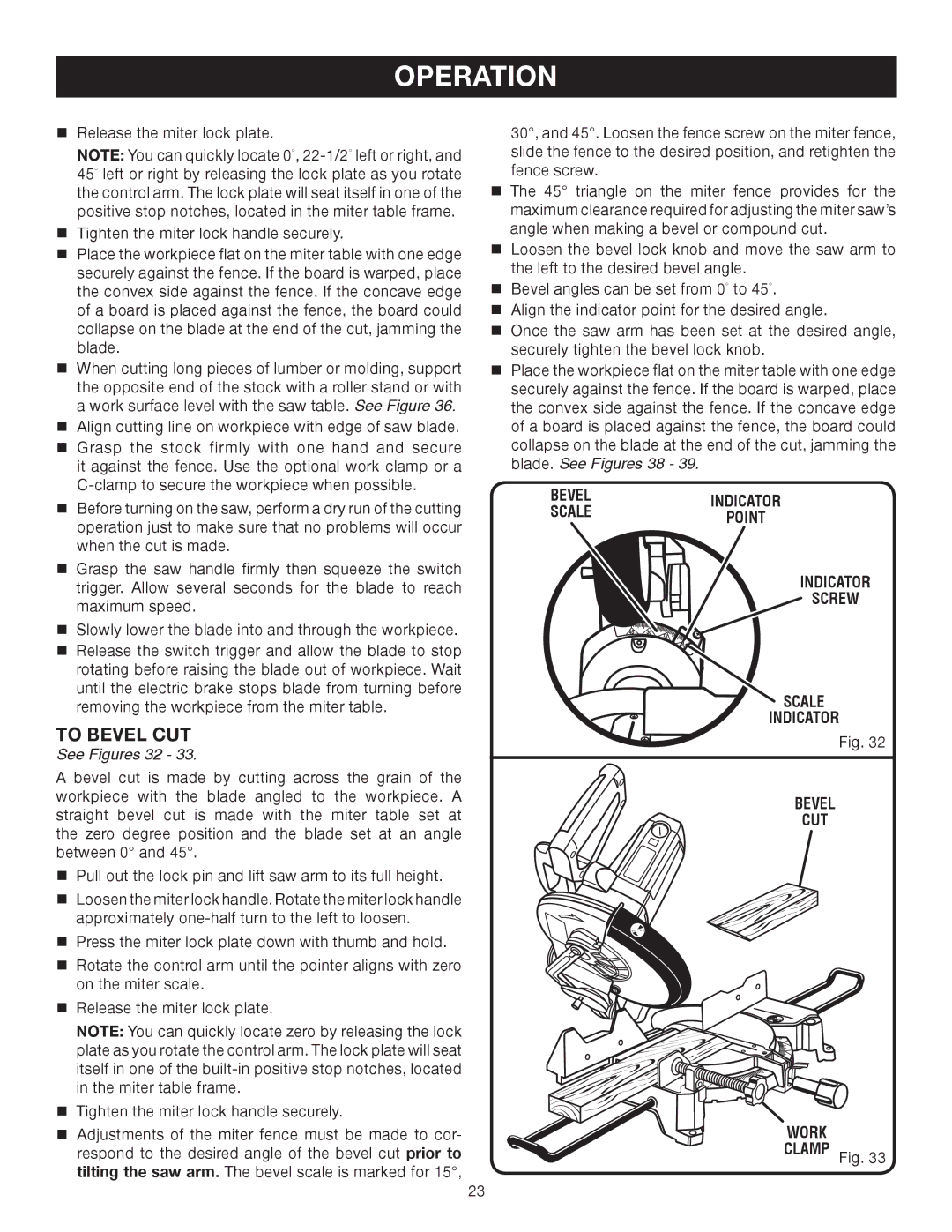
OPERATION
nRelease the miter lock plate.
NOTE: You can quickly locate 0°,
nTighten the miter lock handle securely.
nPlace the workpiece flat on the miter table with one edge securely against the fence. If the board is warped, place the convex side against the fence. If the concave edge of a board is placed against the fence, the board could collapse on the blade at the end of the cut, jamming the blade.
nWhen cutting long pieces of lumber or molding, support the opposite end of the stock with a roller stand or with a work surface level with the saw table. See Figure 36.
nAlign cutting line on workpiece with edge of saw blade.
nGrasp the stock firmly with one hand and secure it against the fence. Use the optional work clamp or a
nBefore turning on the saw, perform a dry run of the cutting operation just to make sure that no problems will occur when the cut is made.
nGrasp the saw handle firmly then squeeze the switch trigger. Allow several seconds for the blade to reach maximum speed.
nSlowly lower the blade into and through the workpiece.
nRelease the switch trigger and allow the blade to stop rotating before raising the blade out of workpiece. Wait until the electric brake stops blade from turning before removing the workpiece from the miter table.
TO BEVEL CUT
See Figures 32 - 33.
A bevel cut is made by cutting across the grain of the workpiece with the blade angled to the workpiece. A straight bevel cut is made with the miter table set at the zero degree position and the blade set at an angle between 0° and 45°.
nPull out the lock pin and lift saw arm to its full height.
nLoosen the miter lock handle. Rotate the miter lock handle approximately
nPress the miter lock plate down with thumb and hold.
nRotate the control arm until the pointer aligns with zero on the miter scale.
nRelease the miter lock plate.
NOTE: You can quickly locate zero by releasing the lock plate as you rotate the control arm. The lock plate will seat itself in one of the
nTighten the miter lock handle securely.
nAdjustments of the miter fence must be made to cor- respond to the desired angle of the bevel cut prior to tilting the saw arm. The bevel scale is marked for 15°,
30°, and 45°. Loosen the fence screw on the miter fence, slide the fence to the desired position, and retighten the fence screw.
n The 45° triangle on the miter fence provides for the maximum clearance required for adjusting the miter saw’s angle when making a bevel or compound cut.
nLoosen the bevel lock knob and move the saw arm to the left to the desired bevel angle.
nBevel angles can be set from 0° to 45°.
nAlign the indicator point for the desired angle.
nOnce the saw arm has been set at the desired angle, securely tighten the bevel lock knob.
nPlace the workpiece flat on the miter table with one edge securely against the fence. If the board is warped, place the convex side against the fence. If the concave edge of a board is placed against the fence, the board could collapse on the blade at the end of the cut, jamming the blade. See Figures 38 - 39.
BEVEL | INDICATOR | |
SCALE | ||
POINT | ||
|
INDICATOR
SCREW
SCALE
INDICATOR
Fig. 32
BEVEL
CUT
WORK
CLAMP Fig. 33
23
